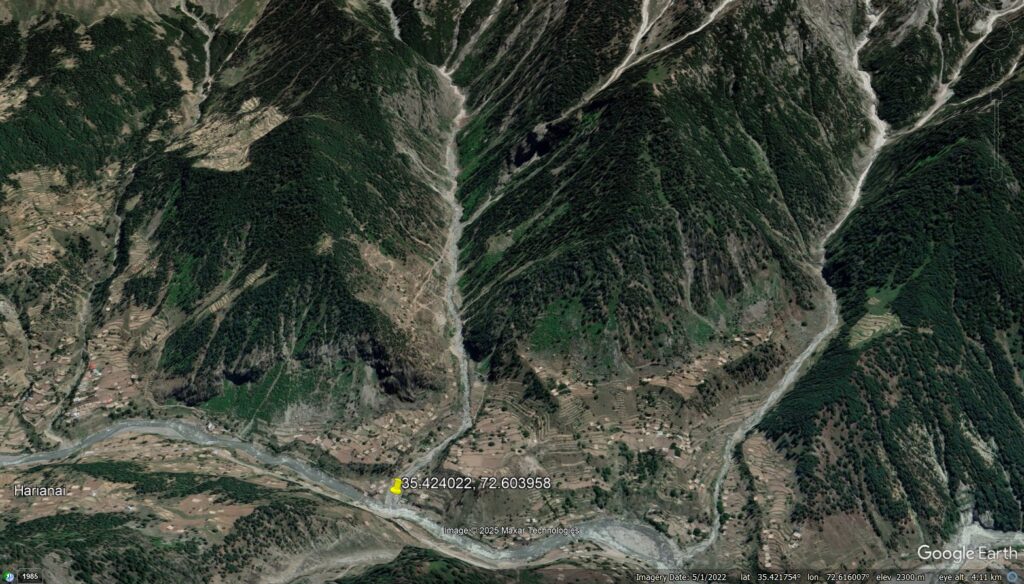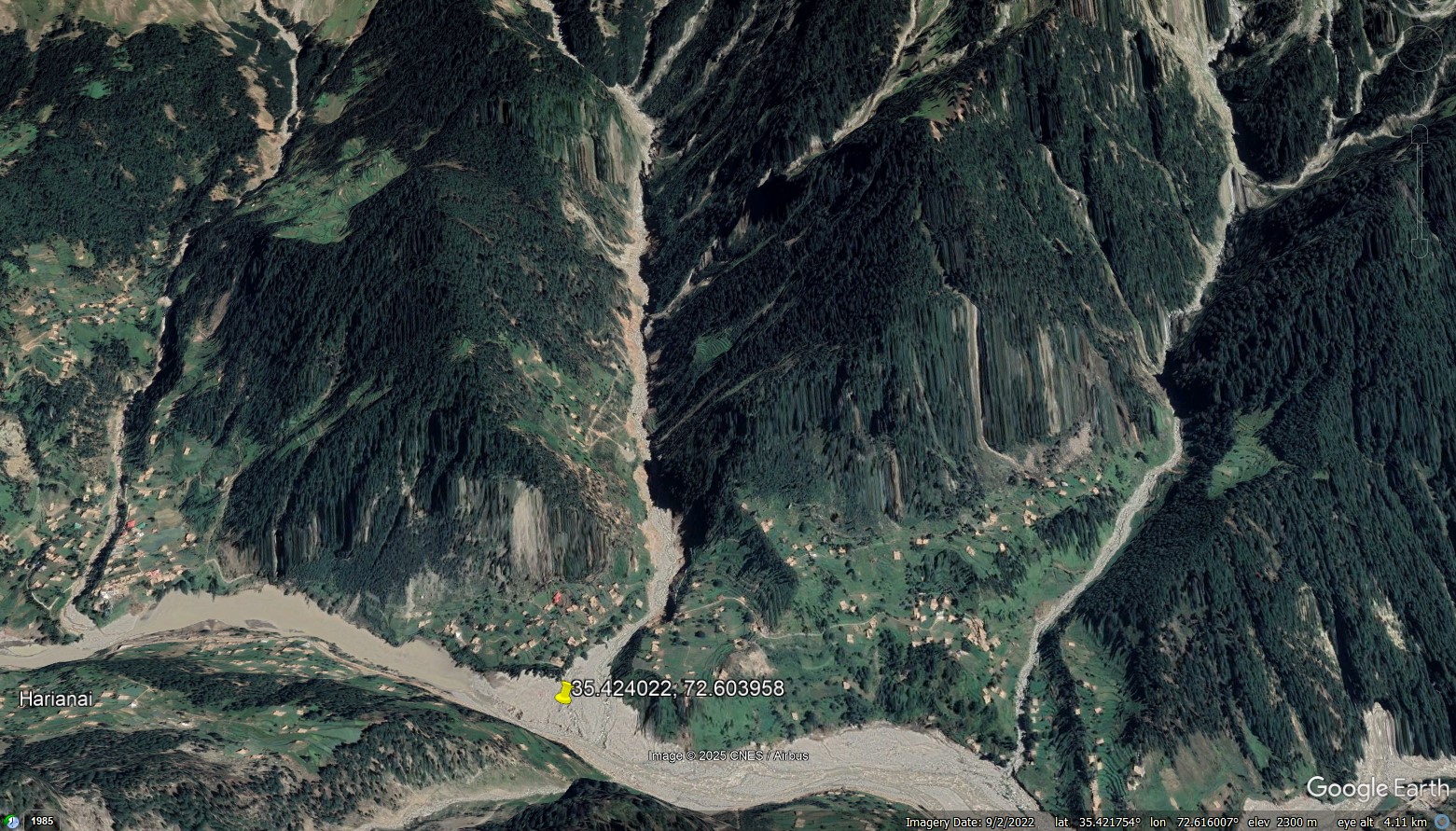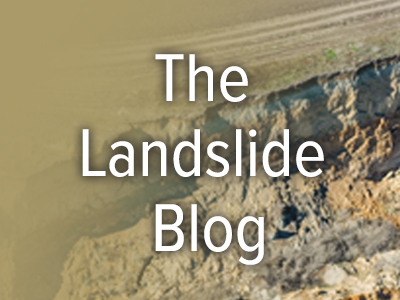The Landslide Blog is written by Dave Petley, who is widely recognized as a world leader in the study and management of landslides.
On 26 August 2022, an extreme monsoonal rainfall event struck the Swat Valley in northern Pakistan. This is a remote area with poor communications, so this event has not received the attention that it deserves. However, there is a fascinating new open access article (Bazai et al. 2025) in the journal Natural Hazards and Earth System Sciences that describes this event in detail. It is well worth a read.
The effect of the rainfall was to cause a severe disaster across Pakistan – Bazai et al. (2025) report 1,718 fatalities and 12,800 injured people as the flood wave travelled down the river system. But the origin of the catastrophe was a series of debris flows high in the Swat valley.
One of the most severe events occurred at Budai Kamar, which is located at [35.42402, 72.60396]. There is fantastic before and after Google Earth imagery of this site. This is a perspective view from 1 May 2022, before the debris flow event:-

And here is the same site just a few days after the disaster:-

And here is an image compare:-


In common with a number of other sites along the Swat Valley, Bazai et al. (2025) report multiple shallow landslides along the walls of the Budai Kamar valley, which combined to form a massive channelised debris flow. The images above show the scale of this landslide and severe damage that it caused. Note that debris flows travelled down all of the major tributaries in this area, and the magnitude of change in the main channel is very clearly evident.
The images also show that 42 houses were completely destroyed at Budai Kamar alone.
The Budai Kamar debris flow blocked the main channel of the Swat Valley for 27 hours, allowing a huge volume of water to build prior to failure. Indeed, the 2 September 2022 Google Earth image shows continued partial blockage of the channel, but by this point the main flow had been released. Unsurprisingly, the occurrence of multiple massive debris flows along the Swat Valley, including temporary blockage of the main channel, led to huge destruction along the course of the river – Bazai et al. (2025) estimate that the losses were about US$2 billion in this area of Pakistan alone.
The authors highlight two underlying issues that led to the terrible debris flows in this area. First, the landslides were triggered by unprecedented monsoon rainfall. Second, the Swat Valley has experienced extensive deforestation, at least in part because of an increase in tourism-related activities.
Channelised debris flows are a horrific hazard, often occurring in remote locations in which the population is highly vulnerable. This fascinating study illustrates the scale of the problem that faces northern areas of Pakistan – sadly a repeat is inevitable in the coming years.
Reference
Bazai, N. A., Alam, M., Cui, P., Hao, W., Khan, A. P., Waseem, M., Shunyu, Y., Ramzan, M., Wanhong, L., and Ahmed, T. 2025. Dynamics and impacts of monsoon-induced geological hazards: a 2022 flood study along the Swat River in Pakistan. Natural Hazards and Earth System Science, 25, 1071–1093, https://doi.org/10.5194/nhess-25-1071-2025.


